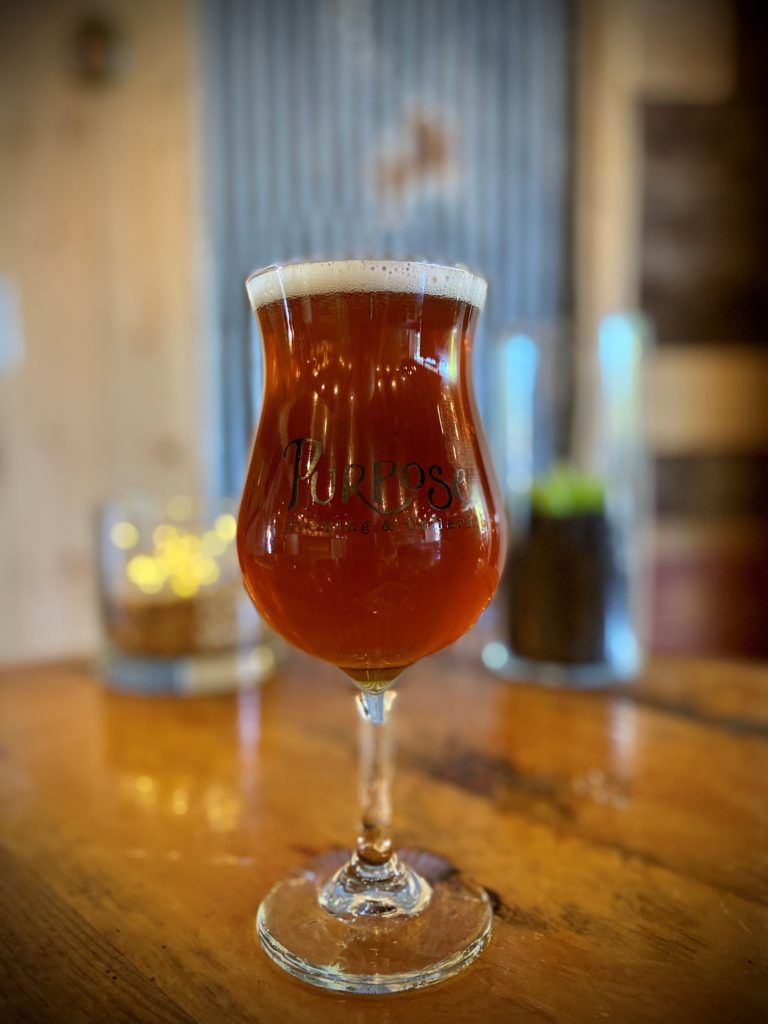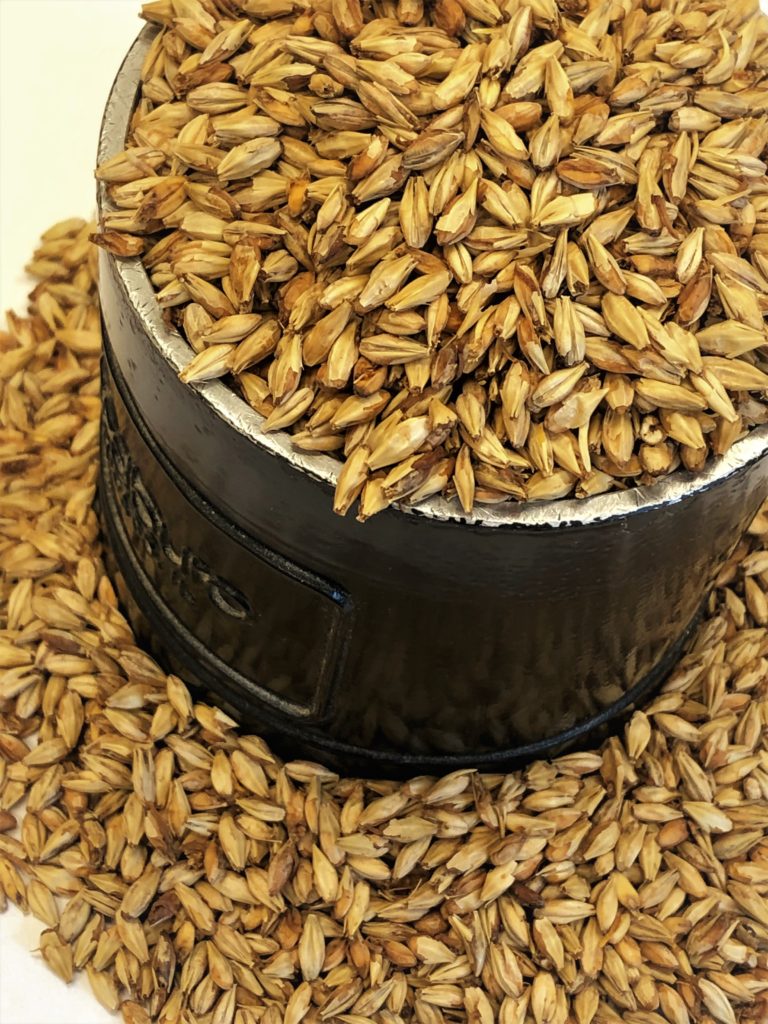From pale yellow pilsners and amber ales to rich English browns and pitch-black stouts, our favorite beverage can certainly occupy a wide range of colors. But why don’t we see blue or green beer (except on St. Patrick’s Day)? It’s because of the malt! In the process of kilning or roasting malt, reactions between carbohydrates or carbohydrates and amino compounds create substances capable of absorbing visible light.
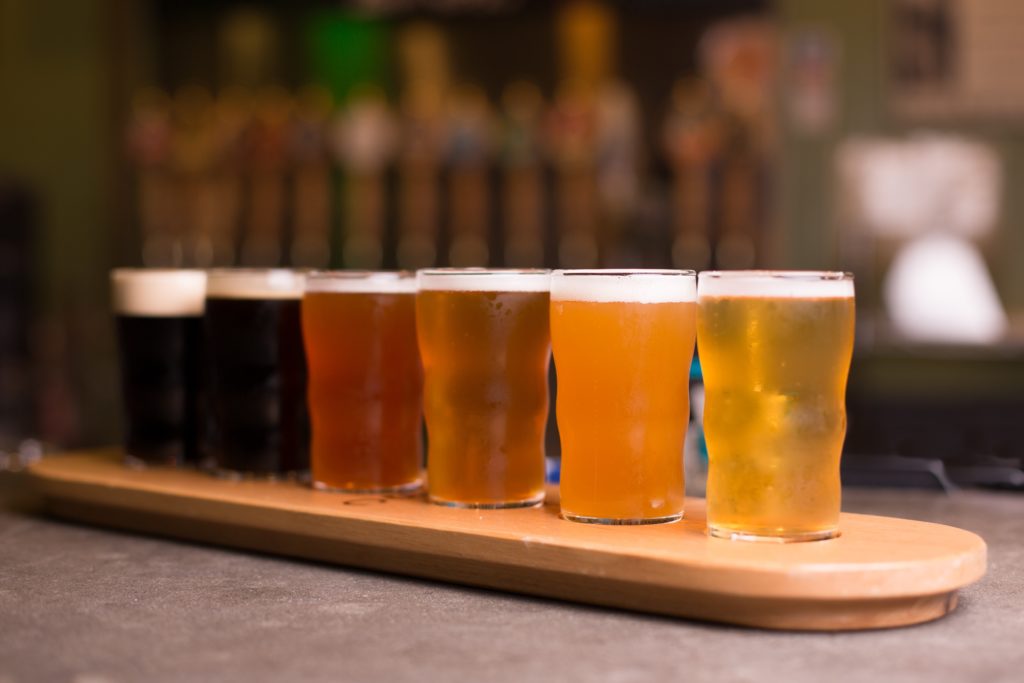
These substances have a strong preference for absorbing shorter wavelengths of light perceived as blue/violet rather than longer red/orange/yellow wavelengths—and we perceive the light not absorbed by the beer. The following image shows an amber ale in front of various colors of light. Notice that the blue line appears almost black, while green is slightly gray. In comparison, the red, orange, and yellow lines remain almost unchanged.
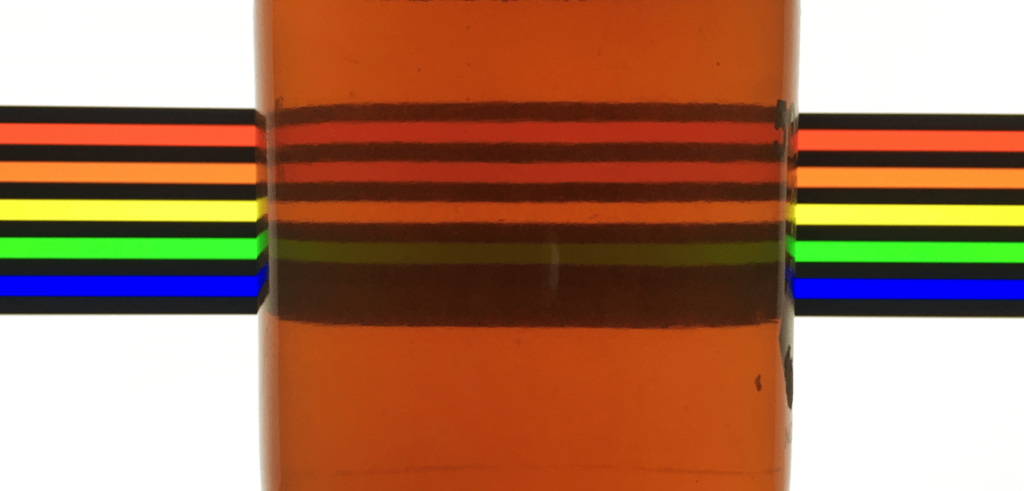
Lighter beers are great at removing blue light but as more or darker malts are used, you notice that green…then yellow…then orange…and finally red light will no longer pass through the glass; eventually appearing as black (the absence of light). You may have observed that red beer is darker than yellow or orange beer, which is evidence that the last light type absorbed by beer as it gets darker is red.
This simplified way of looking at beer color gets more complicated when you also consider that darkly roasted malts have a different effect on visible light than kilned or caramel malts. These extremely dark malts have a more dramatic effect on the red-orange-yellow types of light and produce a color that is more brown than red.
The following graph illustrates how color type (hue) is impacted by using two different malt types. Find the SRM contribution on the horizontal axis from kilned or caramel malt, and the SRM contribution on the vertical axis from dark roasted malt; follow these lines down and across respectively to see an estimation of the beer color in a pint glass of a moderately-lighted room.
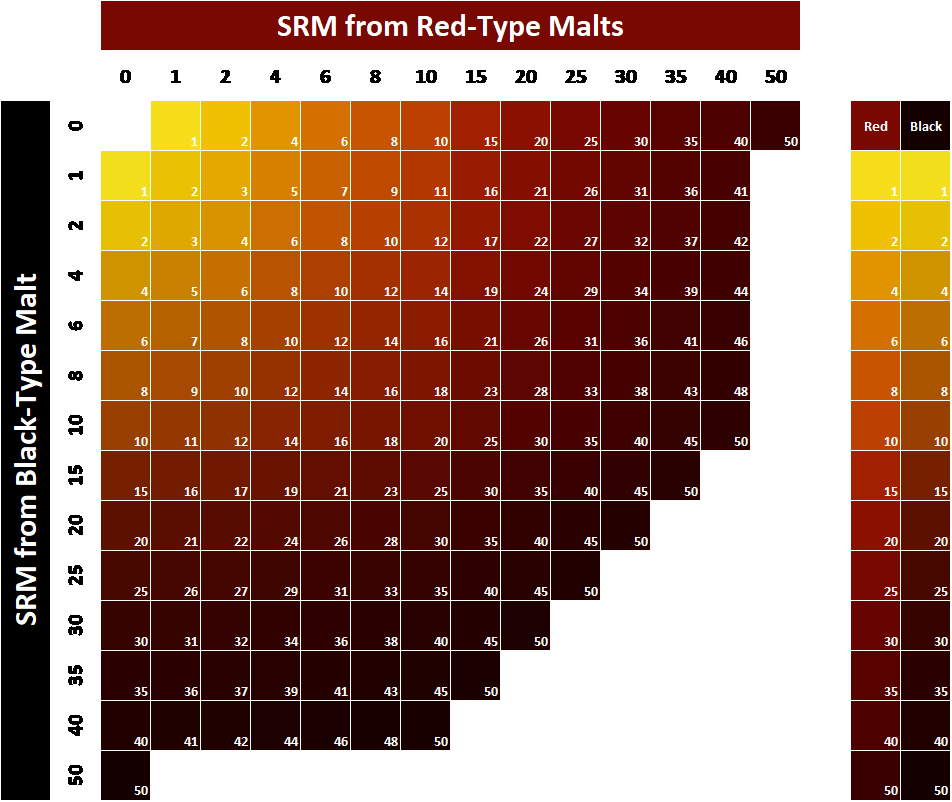
The two columns broken out on the right side of the chart show the side-by-side estimated colors in the red and black ranges. The black colors appear darker… because they are darker, even though they have the same SRM. This is due to the fact that SRM is measured in the blue region of the color spectrum, so two beer colors standardized to the same SRM made from different malts will have the same effect on blue light. But, beer made with dark roasted malts will have a greater effect on the red-orange-yellow types, which means less total light passes through the glass and it appears darker at the same SRM (same amount of blue light absorbed).
Just for fun here are some additional beer color simulations…
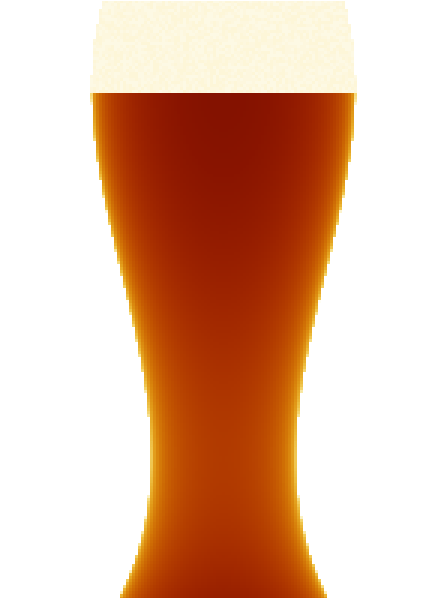
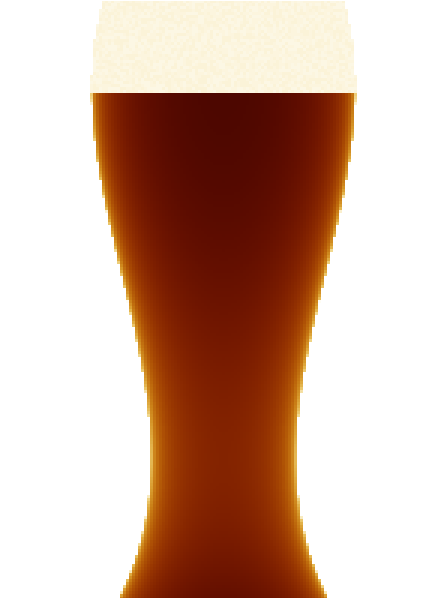
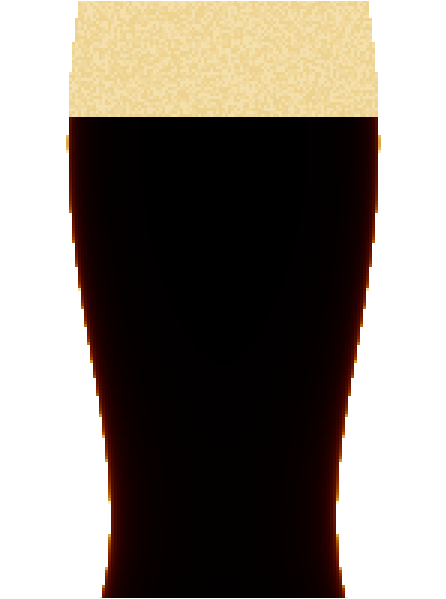
For additional technical information on malt, please visit our Malting 101 section.

